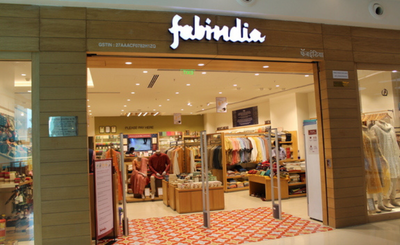No. of orders placed on E-Commerce sites grew 28% during the first 2 days of the FESTIVE SALES
The holiday season’s ability to unite customers and businesses is one of its distinctive features. People enjoy shopping, and businesses view it as an ideal time to boost their profit margins. There’s no denying that the holiday season boosts e-commerce sales. Online businesses make more money during this season than at any other time of the year as online sales increase during this period. The holiday season carries a burden of difficulties. For instance: Due to higher discounts on other marketplaces, a brand sees considerable traffic on their website. as when Amazon and Flipkart launched their massive billion-day sales in an effort to corner the market. The main issue is that the cost per impression (CPM) rises because of the high demand and traffic throughout the holiday season.
The number of orders placed on e-commerce platforms increased by 28% during the course of the first two days of the current holiday sales.
According to Unicommerce, more orders were placed during the first two days of the current holiday sales than during the sale held the year before. To investigate changes in e-commerce order volumes, the company compared data from the first two days of the holiday season sale in 2022 (September 23 and 24) with data from the first two days of the sale in 2021. (October 3 and 4).
“Overall e-commerce reported 28 per cent order volume growth during the first two days of the festive season sale of 2022 as compared to the first two days festive sale of 2021,” the firm said.
During the first two days of the Festive sales in 2022, Unicommerce discovered that the personal care industry had year-over-year (YoY) order volume growth of over 70%.
The electronics section, which excludes mobile phones, saw a 48 per cent year-over-year (YoY) order volume gain during the sale, powered by music items and intelligent wearables. Despite the fact that the order volume in the electronics industry increased by 48% year over year (excluding smartphones). Audio products and intelligent wearables are the key drivers of the electronics industry’s rapid expansion. The biggest order volumes are still seen in the fashion sector.
Despite the divisions reporting a 7% YoY increase in order volume, Unicommerce noted that this gain was enormous in absolute terms given the large order quantities.
The survey claims that sales in other market segments, such as furniture, jewellery, presents, and home décor increased significantly during the festive sales.
Furthermore, Unicommerce saw a YoY increase of over 32% in Tier 3 city holiday order volumes and a YoY increase of over 20% in Tier II volume. Orders from tier 2 and above towns have increased noticeably for major online merchants.
While Meesho, a Softbank-backed online retailer, had a roughly 80 per cent increase in sales on the first day of its five-day holiday sale, with close to 87.6 lakh orders. On Meesho, Tier II, III, and IV cities made up about 85% of the first day’s orders.
On the first day of festive sales of Meesho, orders from Tier 2, 3, and 4 cities made up around 85% of all orders. Jamnagar, Alappuzha, Chhindwara, Davengere, Hassan, Gopalganj, Guwahati, Siwan, Thanjavur, and Ambikapur were just a few of the outlying locations the company claimed to have received orders from.
The e-commerce business Amazon India saw a two-fold increase in clients from tier 2 and tier 3 towns in the 36 hours following their festive offer.
75% of the e-commerce behemoth’s total consumer base during its “Great Indian Festival” sale came from Tier 2 and Tier 3 cities. Flipkart further mentioned that on the first day of the sale, it received orders from tier-2 cities throughout the nation. According to Unicommerce, Tier I cities had a 28% increase in order volume.






